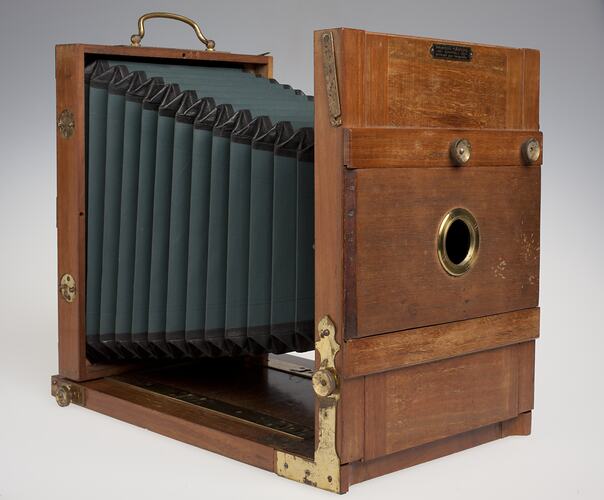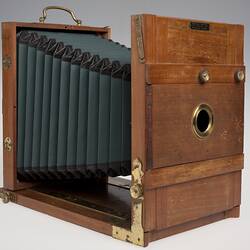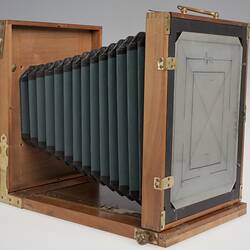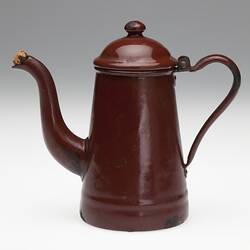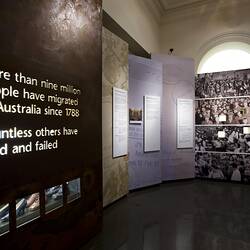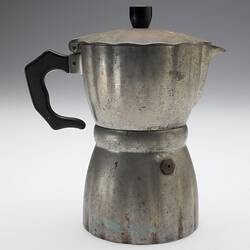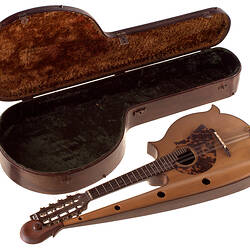Summary
Bellows glass plate camera, manufactured by Parisio Cantini Empoli in Italy, circa 1880. It was used by Vincenzo Candela in his photographic business in Viggiano, Italy. He specialised in portraiture, landscape and village life, and had a well established client base. After his migration to Australia in 1920, Vincenzo continued to use his photographic equipment, more as a hobby than a trade, taking photos of family members and friends in his home, and creating impromptu backdrops with a rug or a sheet.
Vincenzo Candela was a man of many skills. He was a skilled clarinet player and like most itinerant musicians from the region of Basilicata, Italy, Vincenzo travelled the world. As this was seasonal work, when they returned home, these musicians practised other trades to support their families. Hence, Vincenzo was also a skilled tailor and photographer, as well as having a grocery and wine shop. Arriving in Melbourne in November 1920, at the age of 47, with a wife and a 10-year-old son to support, Vincenzo made an assessment of the opportunities for earning a living with one of his three trades.
Unlike the other professions, tailoring, and Italian and European fashion in particular, was very much in demand. Vicenzo had learned the trade of dressmaking in Italy, most likely in Naples, a city at that time renowned for its tailors, many of who settled in Brazil, Argentina and the USA. He had brought with him many fashion magazines and patterns, and purchased a Singer sewing machine soon after he arrived. He kept up to date with current trends in Europe and continued to be a tailor until his death on 19 June 1943.
Physical Description
A wooden boxed bellows camera. The camera is made of wood and metal (brass) and would have once had a glass lens. There is a plaque with the makers details on the front of the camera.
More Information
-
Collection Names
Museums Victoria/Italian Historical Society Co.As.It Collection, Candela Collection
-
Collecting Areas
-
Acquisition Information
Donation from Phil Magris, Italian Historical Society (Co.As.It), 21 Jan 2000
-
Manufacturer
-
User
-
Inscriptions
On plaque on front: PARISIO CANTINI/EMPOLI/Articoli per Fotografia
-
Brand Names
-
Classification
-
Category
-
Discipline
-
Type of item
-
Exhibition Collection Management
95 mm (Length), 252 mm (Width), 330 mm (Height)
-
Keywords
Italian Communities, Italian Immigration, Photographic Equipment, Photography, Working Life, Migration & Settlement
